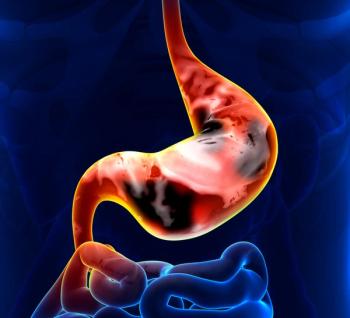
Oncology NEWS International
- Oncology NEWS International Vol 5 No 1
- Volume 5
- Issue 1
Clinical Trial to Study MoAb 17-1A as An Adjuvant to Colon Cancer Therapy
NEW YORK--Patients with stage III colon cancer are being sought for a clinical trial newly underway to determine whether the monoclonal antibody (MoAb) 17-1A is an effective adjuvant in combination with 5-fluorouracil (5-FU) plus levamisole, said Richard Pazdur, MD, associate professor of medicine, M.D. Anderson Cancer Center.
NEW YORK--Patients with stage III colon cancer are being soughtfor a clinical trial newly underway to determine whether the monoclonalantibody (MoAb) 17-1A is an effective adjuvant in combinationwith 5-fluorouracil (5-FU) plus levamisole, said Richard Pazdur,MD, associate professor of medicine, M.D. Anderson Cancer Center.
Speaking at the 13th annual symposium of the Chemotherapy Foundation,Dr. Pazdur described the new MoAb (Panorex, from Glaxo Wellcome)as a murine form of the IgG-2a MoAb 17-1A, which recognizes acell-surface glycoprotein preferentially expressed in adenocar-cinomas.The 17-1A antibody has been shown in vitro to mediate antibody-dependentcell cytotoxicity and complement-mediated cytolysis.
MoAb 17-1A has been approved for single-agent adjuvant therapyin Germany, where a clinical trial showed significant reductionsin disease recurrence and cancer-related deaths. The most commonadverse events were diarrhea, abdominal pain, and nausea and vomiting.
Other adverse events included fever, chills, malaise, dizziness,fatigue, headache, hot flushes, increased sweating, and hair loss.There were no toxicity-related hospitalizations and no therapy-relateddeaths. There were five severe anaphylactoid reactions, possiblydue to human antimouse antigen (HAMA) response.
Dr. Pazdur said that the ongoing US trial is studying 17-1A incombination with 5-FU plus levamisole, currently the most widelyused postoperative adjuvant therapy for stage III colon cancer.
Compared with surgery alone, 5-FU plus levamisole produces a 41%reduction in the risk of recurrence and a 33% reduction in overallmortality, Dr. Pazdur said. The rationale for adding the MoAb,he explained, is the complementary action and nonadditive toxicityprofiles of the two therapies.
The trial expects to enroll 1,800 patients over an 18-month period.Patients receive either 5-FU plus levamisole beginning 22 to 28days postoperatively according to the schedule used in prior clinicaltrials, or 5-FU/levamisole and 500 mg of 17-1A intravenously beginning15 to 21 days postoperatively, followed by 100 mg doses every4 weeks for 4 additional weeks. Based on previous trials, it ishoped that the lower monthly doses will result in weaker HAMAresponse.
The primary objective of the trial is to determine whether thecombination will improve overall survival in stage III colon cancer,compared with 5-FU plus levamisole alone, Dr. Pazdur said.
Secondary objectives of the study include comparisons of disease-freeintervals, disease-free survivals, and times to cancer-relateddeaths. In addition, the pharmacokinetics of MoAb 17-1A and howthey are affected by HAMA will be evaluated.
Articles in this issue
almost 30 years ago
HCFA Reevaluations May Affect Chemo Administration Cost Codesalmost 30 years ago
Breast Cancer Info Now on Internetalmost 30 years ago
HDC/ABMT Has Benefits in Multiple Myelomaalmost 30 years ago
Reporting of Study Comparing Casodex, Eulexin Is Questionedalmost 30 years ago
Limits on Tamoxifen Duration Questionedalmost 30 years ago
ACRO Forecasts Radiologist Surplusalmost 30 years ago
Potency Status Before RT, Not Dose, Determines Post-RT Functionalmost 30 years ago
Dr. Klausner Outlines Goals for NCIalmost 30 years ago
Difficulties in Translating Relative Risks Into Absolute Riskalmost 30 years ago
Managed Care: To Live and Die in LANewsletter
Stay up to date on recent advances in the multidisciplinary approach to cancer.
















































































